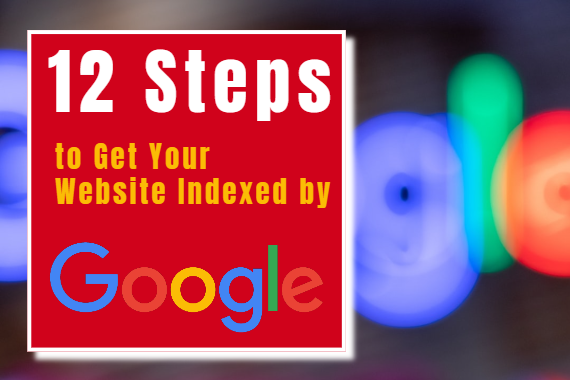Creating irresistible content and giving your plans to the globe is an inspiring journey, but it’s essential to secure that your hard work reaches the right crowd. One of the ultimate integral features of a successful website is getting your content ordered by search engines, particularly Google, which dominates the search view.
Getting your business website arranged method that Google has acknowledged its presence and is ready to display it in search results when important queries are created by users. This can certainly boost your blog’s visibility, increase traffic, and probably engage a bigger market.
However, achieving that coveted spot in Google’s index requires a critical approach. In this guide, we’ll walk you through 12 essential steps to secure that your website gets ordered by Google and starts making its method up the search ranking.
From industrial optimizations like generating a sitemap and utilizing compose data tags to developing content value and building powerful backlinks, we’ll cover all the essential situations to form your site post search engine attention. So, if you’re ready to blow up the potential of your first blog post and make it available to trillions of potential readers, let’s set to work the 12 steps that will set you on the line to Google indexing fame!
1. Check if your website is indexed
Before diving into the indexing process, verify if Google has already indexed your website. Simply type “site:yourwebsiteurl.com” for example “site:example.com” into Google’s search bar to see if any of your pages show up in the results. If they do, it means Google has already indexed your site, and you can proceed with indexing your website.

2. Create a Website Sitemap
A sitemap is a file that contains a list of all your website’s URLs. Creating a sitemap is crucial as it helps search engines understand the structure of your website and the content available. There are various online tools available that can help you generate a sitemap automatically.

3. Submit your Website Sitemap to Google
After creating the sitemap, submit it to Google through Google Search Console. This step will prompt Google to crawl and index all the pages listed in your sitemap, including your website content.

4. Remove “No Index” tags
Ensure you have no “No Index” tags on your website or pages. These tags instruct search engines not to index certain content, and having them accidentally present on your web content would prevent Google from indexing your content.
Use internal links within your content
Internal linking is the practice of linking one page of your website to another within the content. This helps search engines discover and index other pages on the website more efficiently, improving overall indexation.
Remove “No Index” tags from content
Similar to step 4, ensure that your website doesn’t have “No Index” tags. Every page of your website should be easily discoverable by search engines.
Check your robots.txt file for crawl blocks
The robots.txt file instructs search engine bots on which pages to crawl and index. Ensure you haven’t accidentally blocked Google from crawling your website in the robots.txt file.

Avoid orphaned pages
Orphaned pages are those that aren’t linked from anywhere on your site. Make sure all your business websites have at least one internal link from another page, as this increases the chances of Google indexing them.
Add structured data or schema data tags
Structured data, also known as schema markup, provides additional information about your content to search engines. Adding structured data tags to business websites can enhance their visibility in search results and increase the likelihood of Google indexing them.

Remove poor-quality or meaningless content
Google prioritizes excellent, valuable content in appeal search results. Before presenting your main website for indexing, ensure they are fascinating, educational, and offer worth to your readers. Remove some inferior or duplicate content that may hinder the indexing process.
Check for content or page duplicity
Duplicate content can negatively impact your online journal’s search hierarchy and indexation. Use plagiarism checkers to guarantee web pages are one-of-a-kind, and there are no instances of duplicate content on your site.
Build strong backlinks
Backlinks from well-known and authorized websites can certainly increase your site’s indexation and search engine rankings. Focus on designing the finest content that uniformly appeals to backlinks from added websites.
Conclusion
In conclusion, accepting your business website indexed by Google is a crucial achievement in establishing a prosperous networked presence. By implementing the 12 essential steps bounded within the guide, you have put a stable base for your website’s clarity, traffic, and arrangement potential.
Embrace the challenges and relish the rewards of distributing your adoration and skill with the planet. Your site has the potential to create a definite impact on readers, so maintain writing accompanying authenticity and purpose.
As you progress on your website journey, recognize that accomplishment manifests the journey itself. Enjoy the process, rejoice in your successes, and never stop learning and spreading as a blogger. With bravery and a commitment to quality, your business website will be the stepping stone to an astonishing and fulfilling blogging adventure.
Best of luck on your way to Google indexing celebrities!
Digi Rush Solutions is the best SEO agency in India – Hire Digi Rush Solutions for your better business ranking or online presence for more leads and sales.
